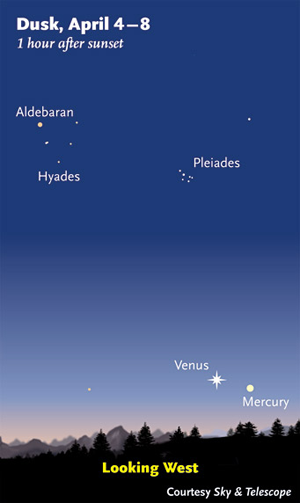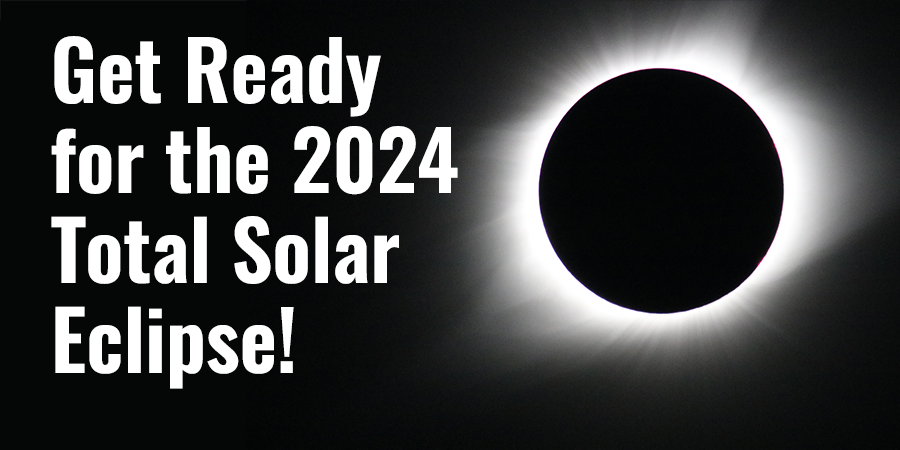Mercury and Venus with the Naked Eye!
Whether you're an amateur astronomer or just one to look out the window at night from time to time and notice a particularly bright moon, it's been a year of big sightings in the night sky.
The year kicked of with a "Blue Moon" on New Year's Eve. Then last week there was a rare chance to see Mars near the moon—an opportunity that won't come again for another two years!
For the next few days, there's another evening sky opportunity you don't want to miss. If you've got clear skies and an unobstructed view to the West, you can see Mercury and Venus both in the hour right after sunset.
The image below shows the location of the two planets on April 4-8, an hour after sunset. For more information about how to locate the planets and how to pinpoint them on April 2-4, check this Sky and Telescope story.

Good luck! If you catch sight of them, let us know!
Image courtesy of Sky and Telescope magazine.









